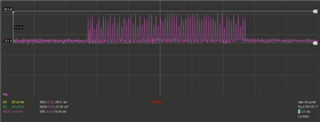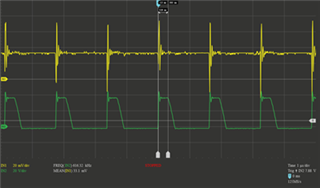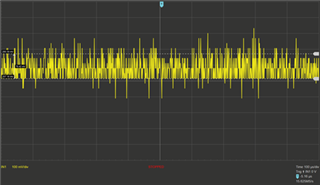Other Parts Discussed in Thread: TPS92518
Hi Team,
We would like to ask your help regarding the customer's inquiry below.
We are using the TPS92518 controller in our automotive application. Our conditions are as follows:
Vin = 9..32V
Vled = 2..12V
Iout = 20..100mA
Under these conditions, we decided on the following component values for the inductance and the R_Sense:
L = 330uH -> I_PEAK_PEAK approx. 30mA
R_Sense = 2.2 Ohm
This should resolve Iout over the range 0-115mA and the converter should operate in CCM.
Now we find that the lower the output current is selected, the more it depends on the input voltage. This means that with an expected Iout of 20mA at Vin of 30V, we measure an Iout of 30mA. At Vin = 9V, we measure Iout = 18mA.
Q1: Is this because the controller is not designed for currents in this range?
Q2: Is the design of the component values wrong?
Regards,
Danilo





